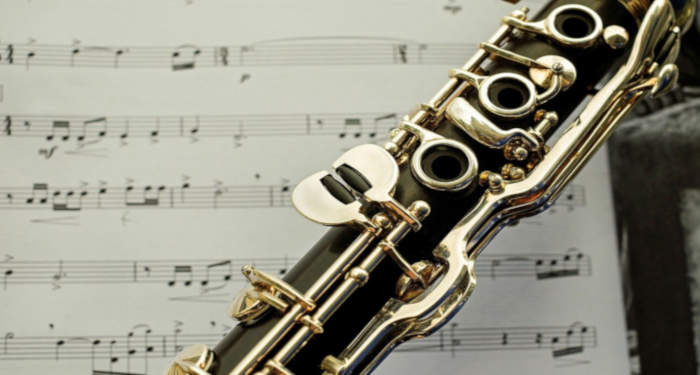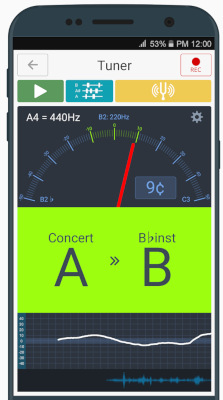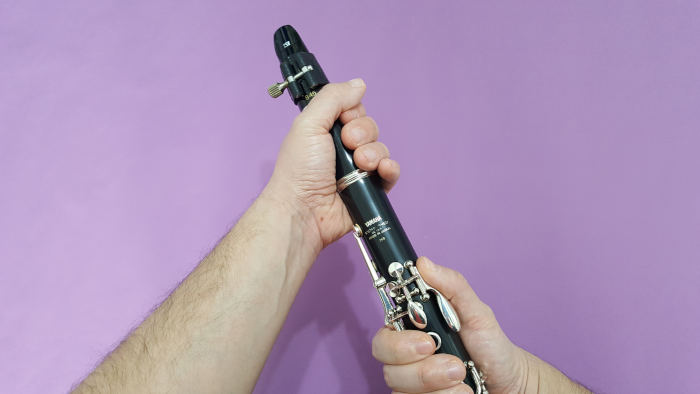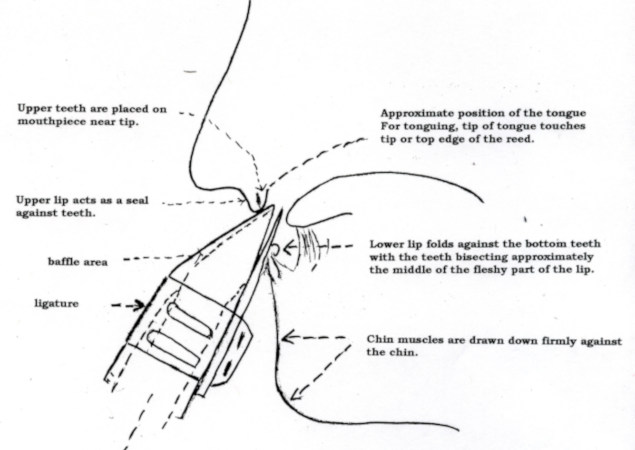
Clarinets and other soprano wind instruments like the flute are notoriously sharp—playing with a pitch that’s too high for the notes. And playing out of tune will inhibit you from sounding good when you’re playing with an accompanist or in an ensemble.
It’s best to learn to tune your clarinet at home if you want to avoid unwanted criticism from band and orchestra directors. Unfortunately, novice clarinetists often have trouble playing in tune.
But tuning is a skill you can quickly develop over time with the right techniques. Here we’ll explore the best practices for keeping your clarinet tuned so your sound blends nicely with the instruments around you.
Factors that affect clarinet tuning
Understanding why your clarinet may be out of tune is necessary before you can make corrections. Let’s run through the factors that are most often to blame for tuning issues with this instrument.
Embouchure
Having an embouchure (the way you hold your lips, chin and mouth while you play) that’s too tight can cause you to play consistently sharp. Clenching down on the reed will cause a high, unpleasant noise.
If your embouchure is too loose or if you’re not playing with good breath support, you’ll be flat.
Mouthpiece
Having a good quality mouthpiece that fits your playing style is a must. Most instruments come with passable mouthpieces. But you may want to experiment with other brands and styles to find one that will help you play in tune.
Barrel length
The longer your barrel, the flatter your clarinet will tend to sound. Lengthening the barrel through various means can lower the pitch of an otherwise sharp clarinet.
Proper support
When you play the clarinet, you need to sit up straight, breathe from your diaphragm and use the muscles in your diaphragm to create proper support. Without proper support, your pitch will vary between notes.
Steps for tuning your clarinet
Make tuning your instrument a habit every time you play—whether during a solo session or practicing with an ensemble.
The basic steps for tuning a clarinet are easy. But the fine adjustments needed to play in tune can be challenging.
1. Warm up your clarinet

Many people believe that tuning a musical instrument is not helpful until they’ve played for a little while to “warm up” the instrument. It’s mostly your embouchure that’ll need warming.
But if your instrument has just been in a cold environment, then the instrument itself will also need to be warmed up. Cold wind instruments of all types tend to play flat.
To warm up, try playing scales on long tones or arpeggios (playing the notes of a chord in sequence). Playing chromatic scales, in particular, is great for getting your fingers going.
2. Check your tone
Most clarinetists tend to tune on the B in the middle of the treble staff (concert “A”). Other popular tuning notes include G and C. Choosing a note somewhere in the middle of the instrument tends to work best. If you play with an orchestra, your conductor will probably have a favorite tuning note.
Using a tuner
Having an electric tuner on hand can be very helpful during this process, especially if you haven’t yet trained your ear to different notes.
You can buy a standalone tuner. But I recommend downloading one of the many free tuning apps available for smartphones like Tuner & Metronome from Soundcorset.
Keep the following in mind when using an electric tuner:

- Many tuners allow you to set their calibration. Make sure yours is set to 440 Hz before you use it, so you get accurate tuning readings.
- The tuner will display a different note than the one you’re playing because the clarinet is a B♭ concert instrument. For example, a C played on clarinet will display as a B♭.
- Hold the note for a few seconds before looking at the tuner. Musicians sometimes look at the tuner right away and subconsciously “cheat” with technique to bring the note into tune.
Most tuners have a needle or similar gauge to show how closely in tune with a given note you’re playing. The needle drifting to the right of the proper note shows you’re playing it too high (sharp). And the needle drifting to the left of the proper note shows you’re playing it too low (flat).
Tuning with an ensemble
Using a tuner during a band or orchestra warmup can be tricky because of the ambient notes all around you. That’s why it pays to tune your instrument ahead of a group practice or performance.
If you need to tune your clarinet in these situations, it’s best to tune yourself to the instruments around you. Group or band members will play a tuning note, and you’ll match the same tone on clarinet.
As with using a tuner, you’ll need to “transpose”, or adjust, for the equivalent note on the clarinet. For example, a concert “C” will sound like a B♭ on your clarinet.

You should be able to hear any difference in tone between your note and the ensemble’s tuning note and adjust accordingly. Training your ear to distinguish sharp and flat notes takes time. And I’d suggest tuning your clarinet separately with an electric tuner until you can reliably tune by ear.
3. Adjust your clarinet
If you discover your clarinet is not playing in tune, you can first try to solve this by adjusting the instrument itself.
Longer wind instruments generally play at a lower pitch. If your pitch is flat, try pulling the barrel and upper joint closer together to shorten the clarinet and raise its pitch. These parts may already be firmly together if you’ve properly assembled your clarinet. That’s why it’s typically harder to tune a flat clarinet.

But other methods, such as warming up and adjusting breathing and embouchure, are often enough to combat a flat pitch.
Extending parts of the instrument to lengthen it can lower the pitch of your clarinet. If you find your pitch is sharp, gently pull your barrel and upper joint apart—a half a millimeter is often enough.
Repeat this process through trial and error until you’re playing in tune.
Adding barrel rings
If your clarinet is consistently sharp and all other methods here to correct it have failed, consider adding barrel rings. These are metal rings that slide over the bottom of the barrel to lengthen the instrument. They’re worth trying if you cannot tune the instrument any other way and typically cost around $10 for a set of six rings.
Replacing the barrel is another option. New clarinet barrels can cost as little as $10 or as much as $200 or more, depending on the brand and material.
5. Check individual notes
Check your tuning with a variety of notes at different octaves to be sure your clarinet is consistently in tune. Some notes are sharper than others. Some of the biggest culprits are the A on the staff (played by the A key) and the G played with all open tone holes and no keys.
Learn how to use your embouchure to control your pitch when your clarinet is generally in tune but has certain pitches standing out. This process has a long learning curve. But anyone can learn to do it given enough time and patience.
6. Adjust your embouchure and diaphragm
Look at your tuner while you’re playing a scale. You may see that most notes are okay, while others are sharp or flat. This means you’ll need to adjust using your embouchure.
If your note is sharp, adjust your mouth to become tighter but not so tight that you constrict the proper vibration of the reed. Clarinetists sometimes call this “lipping up”.
If your note is flat, “lip it down” by relaxing your jaw and throat. This involves fine adjustments to your embouchure that are hard to explain here. Everyone learns the best way to tune individual notes for themselves.
Playing with proper support of your diaphragm from your core abdominal muscles also helps. Keep your back straight and breathe from your diaphragm.
You’ll need to play frequently to strengthen your diaphragm. Breathing exercises, as well as general exercises like sit-ups, can help you to strengthen these important muscles.
Conclusion
Playing in tune is a vital part of being a good clarinetist. Clarinets’ general tendency to play sharp gets on the band and orchestra directors’ nerves.
Rather than being criticized for your intonation issues, do all you can to fix these issues at home. If you tune your clarinet on your own and play regularly, you’ll have a better grasp of your instrument’s relative pitch.
Getting to know your individual instrument and the characteristics of its notes can take time. But it’s part of becoming a good musician. And when you can consistently play your instrument in tune, you’re well on your way to becoming an experienced clarinetist.

Leave a Reply